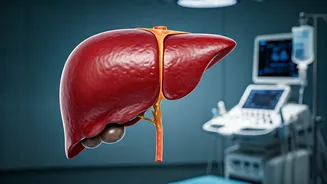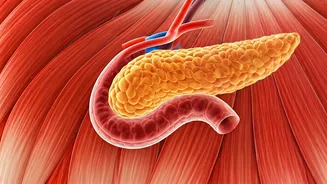Understanding Fatty Liver
Fatty liver disease, a condition characterized by excessive fat accumulation in the liver, is becoming increasingly prevalent. It stems from factors like
obesity, poor diet, and lack of exercise. This buildup can impair the liver's function, potentially leading to inflammation, scarring (cirrhosis), and, in severe cases, liver failure. Early detection and intervention are crucial. The disease often presents without noticeable symptoms in its initial stages, making regular check-ups vital for timely diagnosis. Addressing the underlying causes, particularly lifestyle modifications like exercise and dietary changes, is the cornerstone of managing and reversing fatty liver disease. Ignoring the issue can have serious health consequences.
Brisk Walking (or Jogging)
Brisk walking or light jogging emerges as a highly accessible and beneficial exercise for individuals grappling with fatty liver disease. Engaging in this type of aerobic activity helps the body effectively burn calories, which aids in reducing the amount of fat stored in the liver. It's an easily adaptable exercise; you can start at a comfortable pace and gradually increase the intensity and duration of your walks or jogs as your fitness improves. Aim for at least 30 minutes of brisk walking most days of the week. This regular activity not only helps in fat reduction but also enhances overall cardiovascular health, which is often compromised in individuals with fatty liver disease. Consistency is key, and even small increases in daily activity can yield significant improvements.
Cycling or Stationary Bike
Cycling, whether outdoors or on a stationary bike, provides another effective way to combat fatty liver disease. Cycling is a low-impact exercise, making it suitable for people of various fitness levels, including those with joint issues. This aerobic exercise aids in burning calories and improving insulin sensitivity, which is often impaired in people with fatty liver disease, leading to improved liver health. Regular cycling helps reduce liver fat content and reduces the risk of developing further complications. Start with shorter sessions at a moderate pace and steadily increase the duration and intensity as your fitness grows. Aim for at least 30 minutes of cycling most days of the week to maximize the benefits.
Resistance (Strength) Training
Resistance or strength training is a vital component of a comprehensive exercise plan for managing fatty liver disease. Incorporating exercises that use weights or resistance bands helps build muscle mass, which plays a crucial role in improving metabolism and insulin sensitivity. Increased muscle mass boosts the body's ability to process glucose, thereby reducing the burden on the liver. Strength training can also help reduce overall body fat, which further benefits liver health. Include exercises like squats, lunges, push-ups, and weightlifting at least two to three times per week. Begin with a manageable intensity and gradually increase the weight or resistance as you gain strength. Consulting with a fitness professional can help you design a safe and effective strength training program.
High-Intensity Interval Training
High-Intensity Interval Training (HIIT) emerges as a highly effective exercise modality for accelerating fat loss and improving overall fitness in a short amount of time, therefore also benefiting fatty liver. HIIT involves short bursts of intense exercise followed by brief recovery periods. This training method significantly boosts calorie burning and improves both cardiovascular fitness and metabolic health. Examples of HIIT workouts include sprinting intervals, burpees, or jumping jacks. HIIT sessions can be incorporated two to three times per week, with each session lasting around 20-30 minutes. Be sure to consult with a healthcare professional before beginning HIIT if you have any underlying health conditions, especially if you're new to exercise.
Combined Exercise Approach
For optimal results in reversing fatty liver disease, combining different forms of exercise is the most effective approach. This means integrating aerobic exercises like brisk walking or cycling with resistance training and potentially including HIIT sessions. This combined approach allows you to address multiple aspects of liver health and overall fitness. Aerobic exercises help in fat reduction and improve cardiovascular health, while strength training builds muscle mass and enhances metabolic function. HIIT can provide an additional boost to calorie burning and overall conditioning. Aim for a balanced exercise routine that includes activities you enjoy to ensure consistency and long-term adherence to your fitness goals. It is important to adjust the intensity and duration of these exercises based on your physical condition and tolerance.












